Top 5 Exercises to Work On Your Hip Extension
Introduction
In this article, we will cover:
- What hip extension is
- The difference between global extension and hip extension
- The muscles that control the pelvis and the muscles being stretched when the hip joint is more isolated
- 5 movements/exercises you can use to improve your hip extension
- How to put it all together
First, we need to discuss a little background anatomy to understand what it is we are trying to do with our bodies when we work on hip extension.
What is Hip Extension?
Hip extension is the name given to the motion your hip joint moves into when your thigh goes behind your body line, when viewed from the side.

At the hip joint itself, what is happening is a rolling of the head of the femur in the socket of the hip.
Read more about the mobility of the hip joint and the anatomy in our Ultimate Guide to Hip Mobility
Based on studies of human movement, there should be around 15 degrees of extension range of motion at the hip joint. 15 degrees is an average. Some people may have more and some people may have less. Just think of 15 degrees as a reference.
It’s good to know these numbers, but more importantly in my opinion is regularly working on and maintaining your joint ranges of motion and the actual act of doing it instead of being hyper focused on a measurement.
Common Compensations when Working on Hip Extension
When working on hip extension, it’s important to know where common compensations happen so you can avoid doing them as you work on this range of motion.
The most common area to compensate during hip extension mobility work is the lower back.
The human body works in patterns of movement, meaning multiple areas work together to create a global movement.
In global extension, the hip extends and the lumbar spine also extends. They work together in that instance, which would appear like the pose shown below:
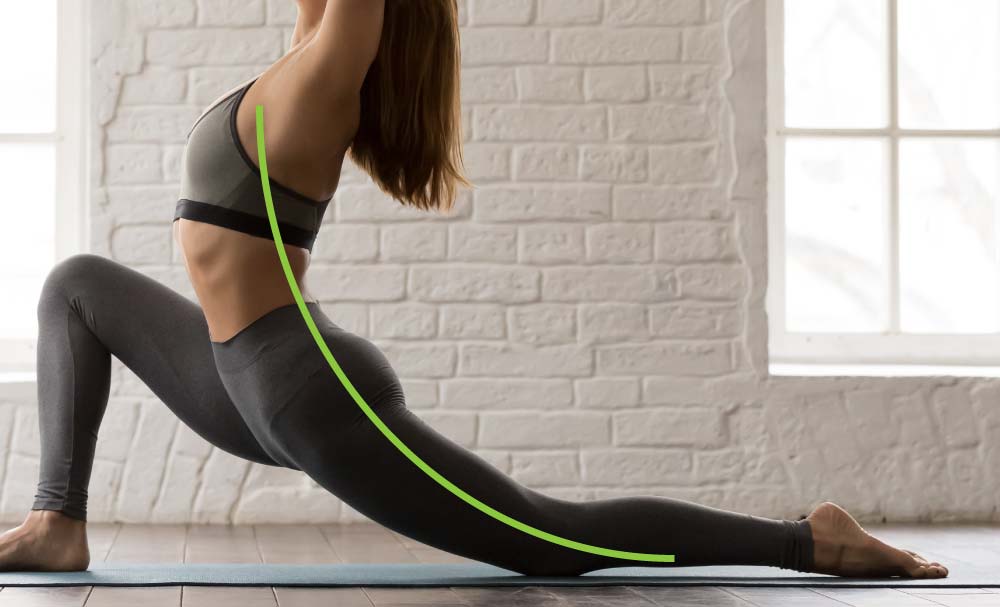
The problem arises when you want to work on your hip extension but you move through your lumbar spine instead, either because you aren’t aware that's happening and shouldn't be for this particular type of work or because your hip is stiff and the lumbar spine moving into extension is relatively easier and therefore the motion occurs there.
We often move through the joints that are easiest to move. They sort of act like a sponge and ‘soak up’ the global range of motion into that particular segment.
The lower back easily ‘picks up the slack’ in extension if the hip is stiff to go into extension, especially toward the end.
You should have the ability to consciously choose where you are getting your range of motion.
Since you are particularly trying to work on your hip extension (which is assumed since you are reading this), it makes sense control the position of the lower back.
Because we are conscious humans, we can voluntarily use our bodies in a particular way to achieve a goal.
In the next section, we will discuss specifically what is happening at the hip joint and details on controlling pelvic positioning.
Pelvic Positioning to Best Work on Hip Extension
To work on your hip joint extension, it’s helpful to understand what is happening ‘under the skin’ at the level of the joint, so you can visualize what it is you are trying to do.
The hip joint is essentially made up of two bones:
- A socket on the pelvis
- The head of the femur

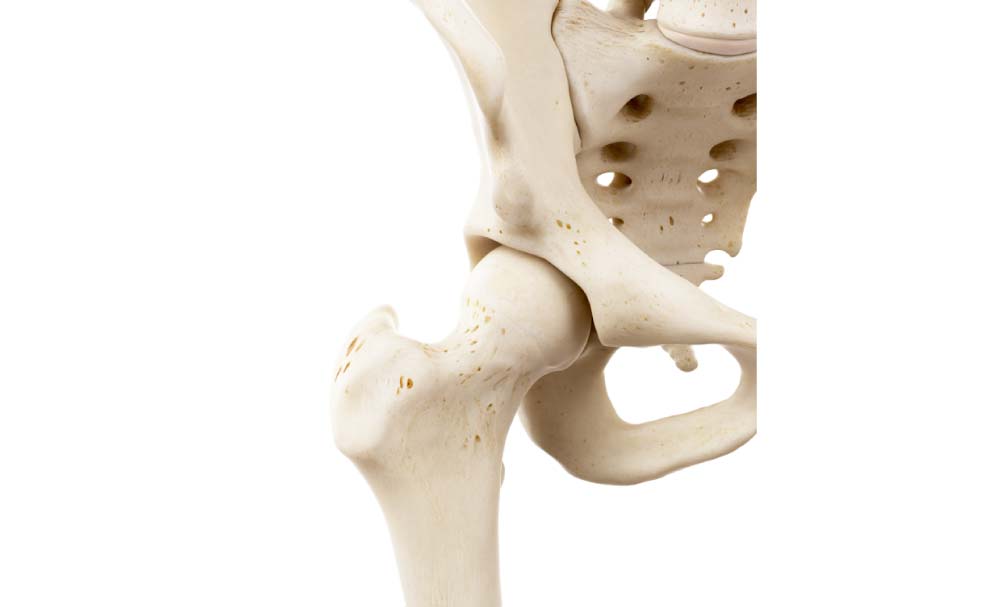
Hip joint extension is when the motion is occurring just in the hip joint, as seen in the photos below.


The pelvis can also move via its connection to the lumbar spine.
When your lumbar spine goes into extension, it rotates the pelvis into what is called anterior pelvic tilt.
This changes the orientation of the hip socket and flexes the hip joint in the process.
The extension that was occurring in the hip joint moved to the lumbar spine essentially.
To work on your hip extension, you want to prevent that from happening.
You can prevent it from happening by purposefully trying to prevent your pelvis from rotating anteriorly.
Two major muscle that can do this are your gluteus Maximus and your rectus abdominis.
Look below at the images to see how they attach to the pelvis and how they would move the pelvis, femur, and spine.

If you are doing something where you want global or full body extension rather than isolated hip extension, you would not want to prevent the lumbar spine from extending as we are discussing in this article.
The Muscles Being Stretched During Hip Extension
When you take your hip into extension without extending the lumbar spine, as this article is instructing, the main muscles that will be stretched are:
- The rectus femoris
- The psoas
- The iliacus
Rectus Femoris
The rectus femoris is one of the quadriceps muscles and the only quad muscle that crosses your hip joint.
It attaches on to your pelvis and ultimately to your quad tendon, so when you extend your hip, this muscle needs to lengthen.
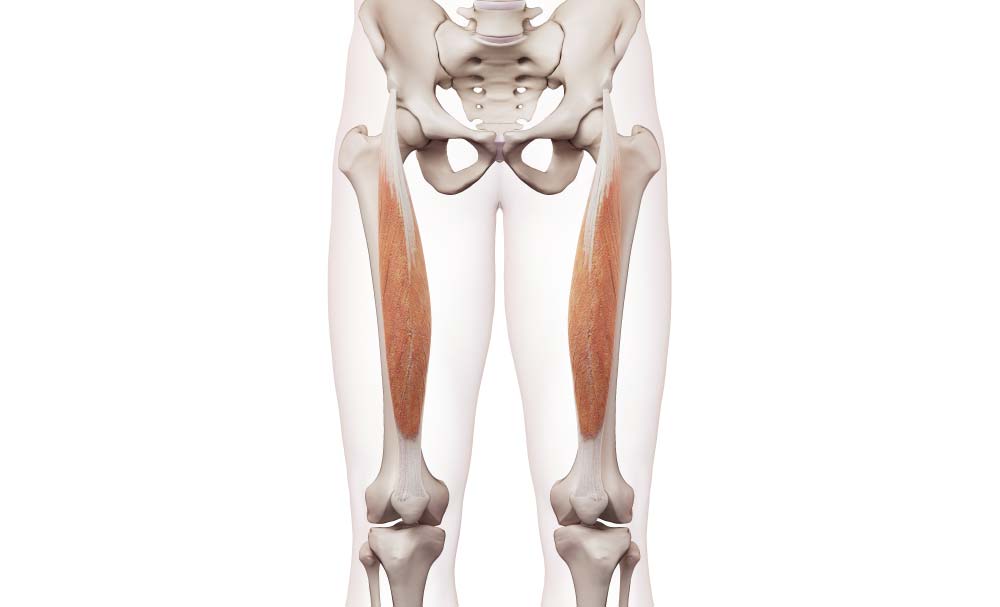
Your two main ‘hip flexors’ when you hear people say ‘hip flexors’ are the psoas and iliacus.
Together, they’re often referred to as the iliopsoas.
The attach from your lumbar spine and pelvis onto your femur.
When you go into hip extension, these muscles need to lengthen.
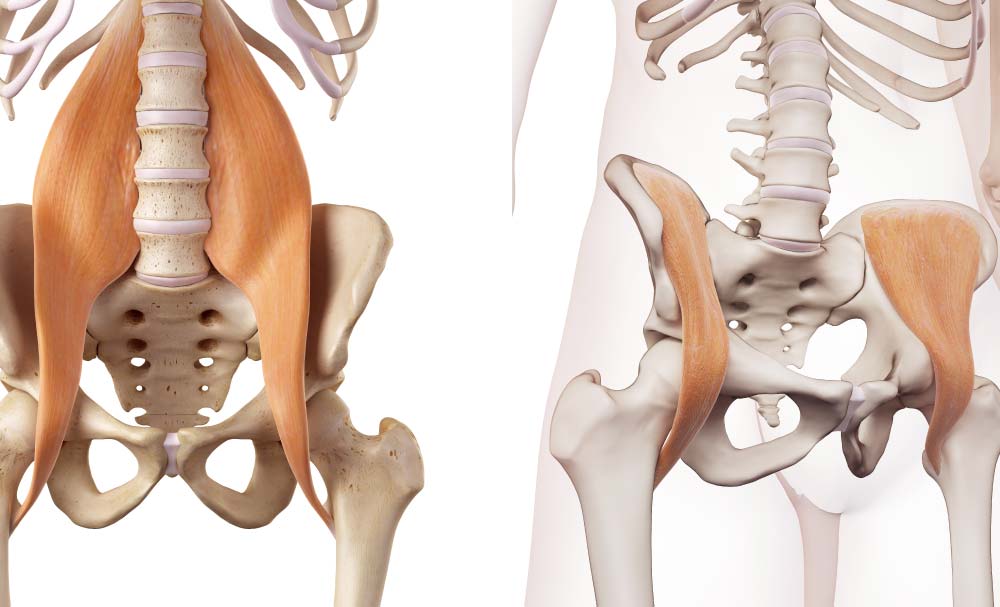
Although this is what is happening with the muscles, usually we suggest focusing more on what you are trying to have happen at the joint rather than which muscles are being stretched.
The muscles being stretched are secondary to the joint position you are trying to achieve, so it is more important to focus on the joint positions.
How to Work on Your Hip Extension
Now that we have an understanding of the bony anatomy of the hip joint, the relationship of the position of the pelvis with how hip extension works, and we know the muscles that are being stretched during hip extension, it’s time to talk about how to actually work on this range of motion.
There are countless ways to stretch and methods of stretching.
For simplicity, we will focus here on three primary things you can do.
- Foam rolling/soft tissue work
- Unloaded stretching
- Loaded movement
Foam Rolling/Soft Tissue Work
Foam rolling your quadriceps (which will work on your rectus femoris) can be a useful first step in working on your range of motion.
The mechanism by which foam rolling increases range of motion is most likely that it helps the muscle to not be sensitive to stretch, so it’s easier to get farther into the joint range of motion.
Below is a tutorial video on foam rolling the quadriceps. We typically suggest performing 20 seconds per leg and not spending much more time than that. The 2nd and 3rd techniques are more important to spend time on.
Unloaded Stretching
In unloaded stretching, what this means is working on hip extension somewhat passively, as you will see when you compare this to the loaded movement below.
We suggest using two different stretches, one with the knee somewhat bent and one with the knee quite bent.
The video below teaches how to perform a hip extension stretch that will emphasize more of the iliopsoas.
You can also perform a variation with the knee bent. This will focus more on the rectus femoris because it crosses the knee joint.
Loaded Movement
Loaded movements are the most important thing to incorporate since the real world is loaded movement.
Consider foam rolling and unloaded stretching as getting the joint and tissues prepared for the loaded movement.
There are two variations included for variety’s sake.
Loaded Movement 1: Rear Foot Elevated Split Squat
This is often done as a strength training exercise, but if you modify the intention to work through hip extension and carefully controlling your pelvis, it works great as a movement to improve your hip extension mobility.
Loaded Movement 2: Crab Quad Stretch
This movement is quite different and more complicated to perform, but it can really be effective in opening up new ranges of motion.
How to Program the Different Components to ‘Lock In’ Your Hip Extension Gains
Our preferred way is to structure working on your hip extension like this:
For 3 rounds or for 5 minutes, work through:
- 20” foam roll each leg
- 10 Kneeling Hip Flexor stretch per leg (or rocking quad stretch)
- 8 Crab Quad Stretch per leg (or rear foot elevated split squat)
Work through that cycle for either time or for rounds, depending on what you prefer.
The focus is not on going fast, the focus is on getting into your hip extension, controlling the range of motion, and locking it in with an actual movement.
Each round you go through you likely will be able to get a little more range, smoother range, or easier feeling range. That is the goal.
You can perform this daily if you want, or every couple of days.
In our Hip and Low Back Mobility Program, we work on hip mobility every other day, with some days focusing on extension, some days on rotation, some on flexion, and mix them in a variety of ways.
Need help with your lower back and hip mobility?
Follow our program, which will show you exactly what to do and how
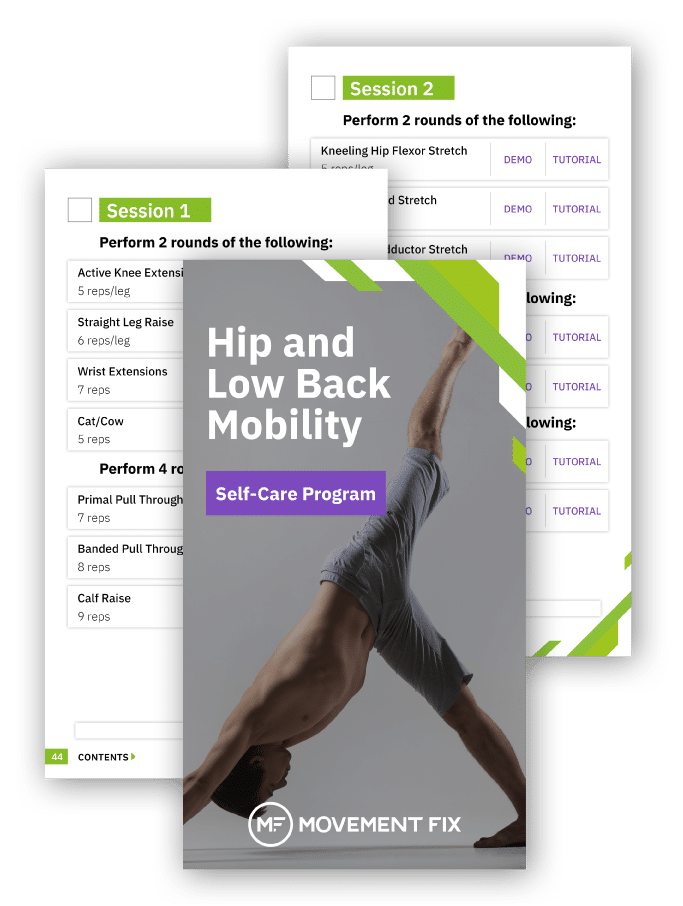

Need help with your lower back and hip mobility?
Follow our program, which will show you exactly what to do and how
What to Read Next
Why Your Lower Back Hurts When Sitting and What to Do About It
Why Your Lower Back Hurts When Sitting and What to Do About ItIntroductionThere are a handful of reasons why your lower back may hurt while sitting, so it’s impossible for an article on the internet such as this to explain to you exactly why your back hurts, but since...
Ultimate Guide to Hip Mobility
Ultimate Guide to Hip MobilityThis article is designed to be your go-to resource for hip mobility, both in understanding it theoretically and the practical implementation of doing the work or guiding others through the work. You can learn all you want about the human...
Commonly Misunderstood Words in Movement and Mobility
Commonly Misunderstood Words in Movement and Mobility In this post I will be sharing my thoughts on common words used in the movement and fitness world with a focus on how to better define them conceptually, and where applicable, mathematically. Each day...
Comments
